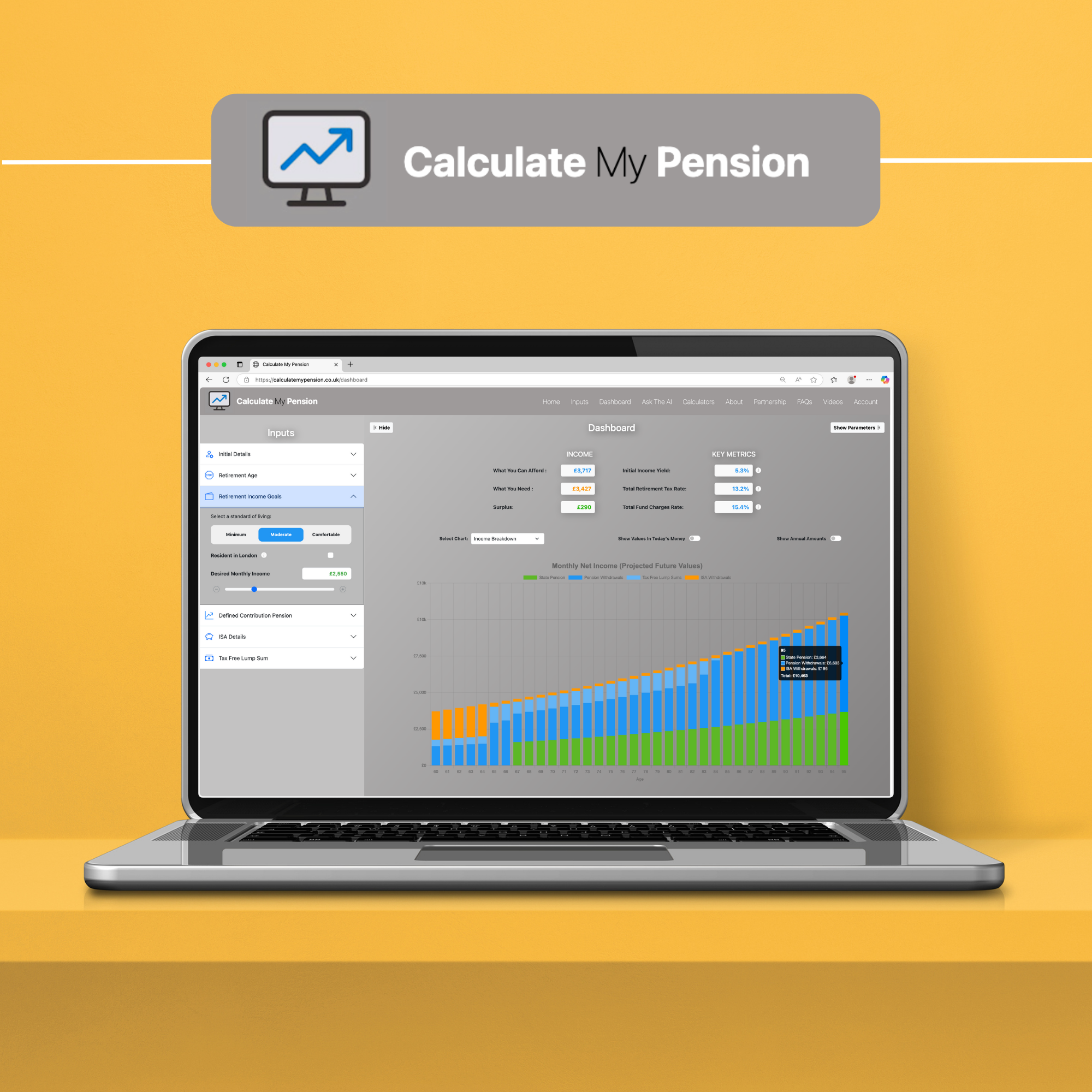Login or Register
Before you can subscribe to premium, you need an account. Please log in or register.

Calculate My Pension is an independent retirement planning tool that directly answers the most important question - what age can I afford to retire?
Tick the box that applies to you:
You can get started right away by clicking the button below, or scroll down for more information.


Calculating what income you can afford in retirement is just one half of the retirement planning equation. The other half is understanding how much income you’ll need to support your desired lifestyle.
We use the widely recognised Retirement Living Standards to help you estimate your personal income needs. These specify three standards of living: Minimum, Moderate, and Comfortable with income requirements for each that reflect real-world costs based on independent research.
Premium members have access to the Retirement Budget Calculator which allows you to tailor your retirement income needs in line with your own circumstances or preferences, using the same expense categories as the Retirement Living Standards research.
This provides a quick and easy way to allow for your own personal circumstances and preferences without already having a budget, while still using the Retirement Living Standards as a foundation. This tailored income target feeds directly into a comparison with your calculated affordable income, allowing you to see if you are on target and to adjust your plans accordingly.
Retirement income needs are different for couples than for individuals. Two people living together can share many costs, such as housing, utilities, and food. It therefore makes sense to plan for retirement as a couple rather than as two separate individuals.
Modelling your combined affordable retirement income as a couple allows you to maximise tax efficiency by utilising both partners' tax allowances. You can also see the effect of directing income from one partner's pension to the other, which can be particularly beneficial if one partner has a higher tax rate.
The premium Plan As A Couple feature projects your partner’s pensions, savings and other retirement benefits alongside your own and calculates an affordable combined retirement income for the two of you.
To put that figure in context it is compared with the couple‑level Minimum, Moderate and Comfortable benchmarks published by the Retirement Living Standards.


Here is a list of the free features, providing a valuable tool to all users.

These features are planned for rolling out over the next 12 months. The subscription price will increase to reflect the additional functionality, but existing annual subscribers will continue to enjoy all updates at their originally-locked rate. So subscribe now to lock in the best rate!